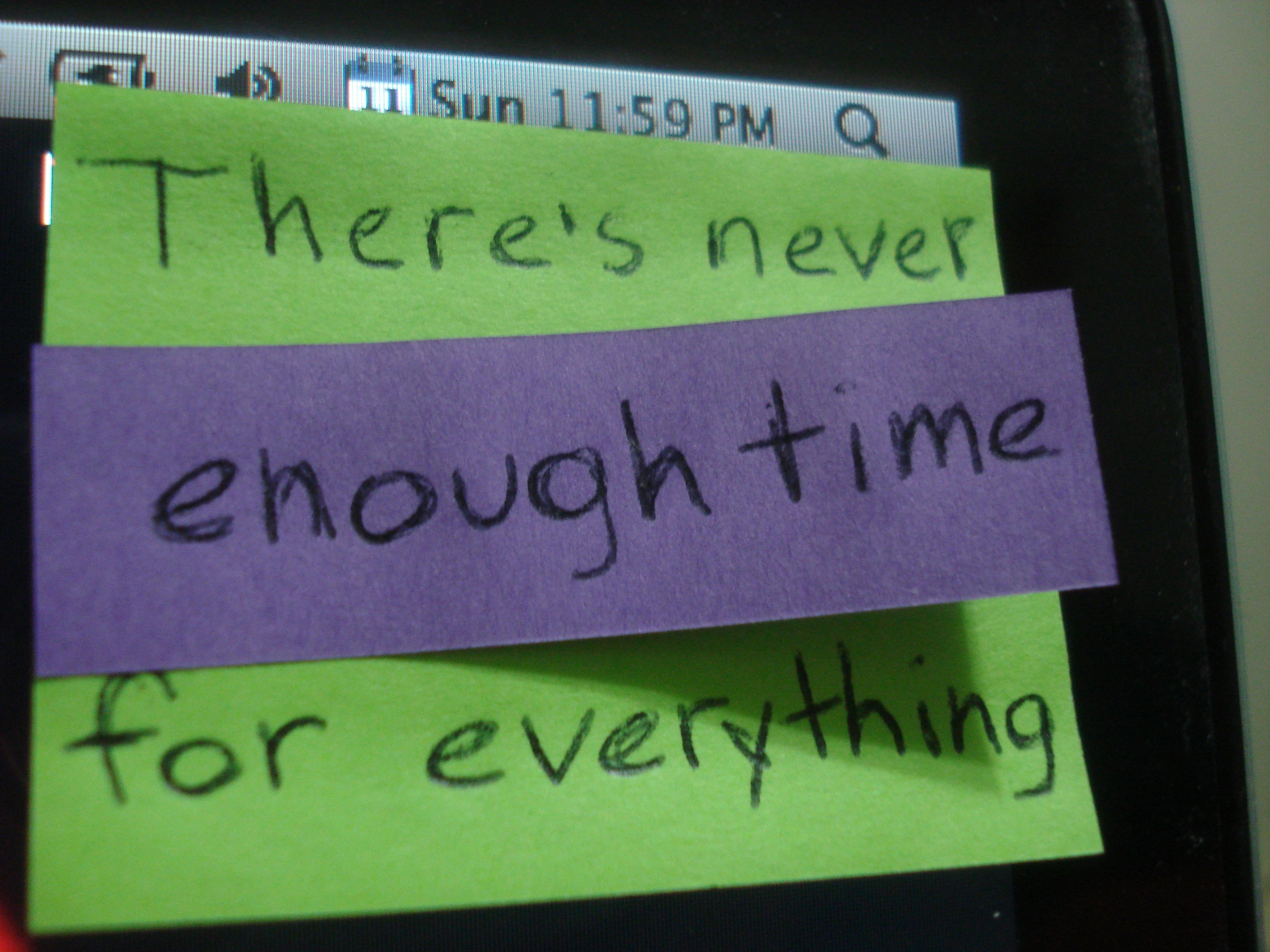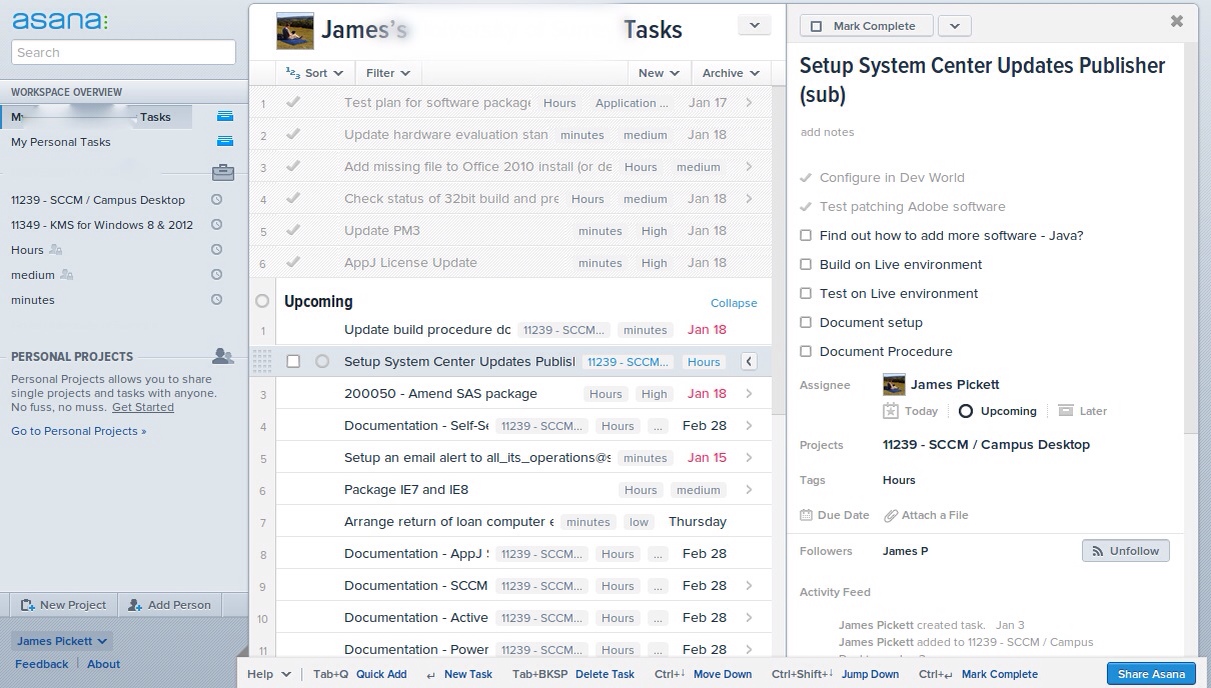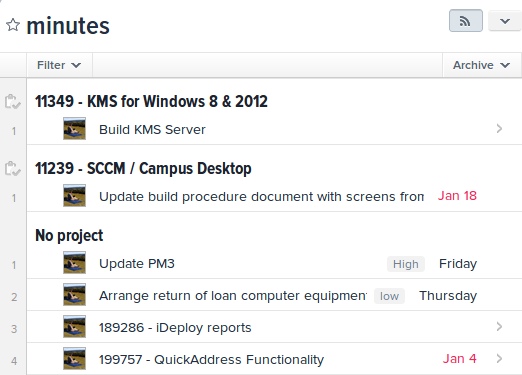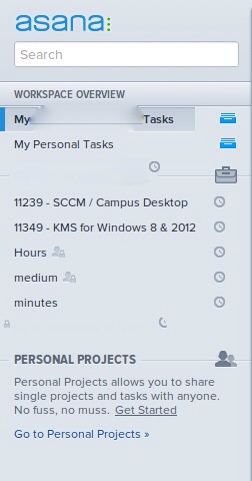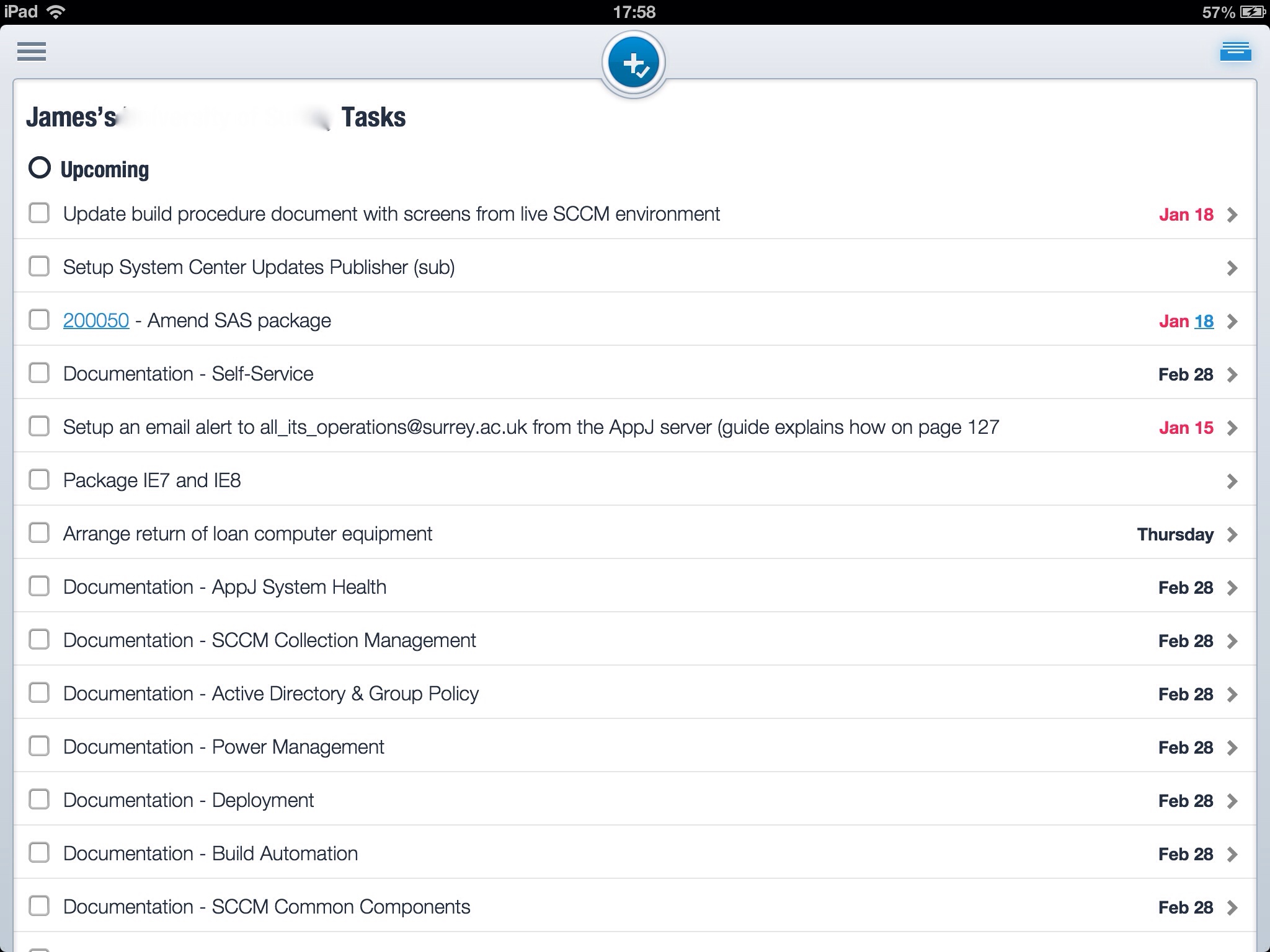Manage a Busy Life Better with Asana
 Modern life, we're told, is stressful. There are not enough hours in the day, we're all constantly racing from one thing to another, trying to pack more and more in before not-enough-sleep, only to get up each morning (too early) and go through it all again. Is there really so much to do, or are we all just very disorganised and chaotic?
Modern life, we're told, is stressful. There are not enough hours in the day, we're all constantly racing from one thing to another, trying to pack more and more in before not-enough-sleep, only to get up each morning (too early) and go through it all again. Is there really so much to do, or are we all just very disorganised and chaotic?
At work, I've identified that the stress comes, not from too much to do (busy is better than bored), but from losing track of all the things I have to do. In my role, there are several ways my individual tasks can arrive at my desk. They can be assigned to me in meetings by a Project Manager, for example, and scribbled down in a notepad. Secondly, they can come through our electronic ticketing system and when it's my turn to do something, the ticket will be assigned to me until I close it or pass it on. Then there is the phone, email, visits in person and so on. On bad days, I have felt the frustration rise up in me as I realise that all I am doing is administering these different conduits, rather than actually getting anything done! Even without interruption, when there may only be thirty minutes to an hour between meetings, how to decide which action from all these systems to work on will often make too big a dent in the available time before I have to go! Last year, I decided it was driving me mad.
Back at home, it's much the same for many of us. The house needs cleaning, cars need maintaining, kids need schooling, entertaining, feeding, friends to see, bills to pay. The list is endless.
Except it isn't, if you have a well managed list, and that's why I'm so happy with my discovery of Asana.
Asana is a very clever, very focussed task management tool that takes advantage of the fact that most of us now have smartphones, tablets and good old PCs connected to the internet. It allows you to (in their words) plan, organise and stay in sync, easily.
Many of us will have tried keeping 'To-do' lists in the past and some of us may well be very happy with reams of post-it notes around the place, or keeping everything in a notepad. I've found that my lists have become so long that they've become a problem in themselves. An item on the list may have several actions over time to complete, I may not remember how far I got through a task when I come to revisit it or need to recall it for someone else and knowing what the deadline is, isn't always enough information to select the next priority in a hurry. This is what Asana can help with.
In the context of my work I now give Asana about ten minutes at the beginning of each day, but I believe it's saved me much more. Each action that has come out of a project, email, ticket or whatever is added and then I can append a little bit of basic information that will make things much easier and less stressful to manage as I go through the day.
Firstly, I can write some notes in the task. If any detail came with the email for example, a simple copy and paste keeps everything together. Next, if more than one step is required to complete the overall task, I can break it down with some sub-tasks, which will make things much easier to track and recall progress.
Tagging is included, which is a very popular method of keeping things manageable and findable online. You can create any tag you like, I've been tagging things with a priority level (High, Med, Low) and a rough estimate of time it will take (Minutes, Hours, Days).
Finally, I can attach files, either from my computer or a Dropbox account and assign a due date for the overall task to be completed.
All of these elements are optional and can be completed at any time, but what I have now is a single list to work from, regardless of what the source was.
It's still true that the list can get pretty long, so the next thing is to have a broken down shortlist of tasks that I aim to complete that day. There is also no need to be constantly reminded of tasks that aren't due for a while and Asana offers a nice way to manage the list here too. Each task can be assigned to 'Today', 'Upcoming' or 'Later' which looks like this:
A check of my office calendar reveals how many meetings I have and how much time in-between to do some work. I can then pick from my task list a combination of actions from the mins/hours/days tags and due dates and assign them to 'Today'. Now they are all I need focus on and those thirty minute gaps in between meetings can actually be spent doing something productive, I can simply click on the 'Minutes' tag and see a filtered view that shows me all the tasks that can be completed in the time.
Of course in a perfect world, we'd all finish every task we started, but in my world certainly, that doesn't always happen. Fortunately, you can use the comments section, or 'Activity Feed' to make note of what's been going on, so you can pick up quickly next time that task is revisited. This also forms a very handy timeline when reporting back to Management.
If you, like me, like a good list, there is quite a bit of satisfaction in mapping out your day this way and then being able to tick off the tasks as you go and see what you achieved at the end of the day. It's actually motivating, seeing a measure of your achievement. Completed tasks are moved to the top of the screen and greyed out, ready to be archieved away from view when you're done with them.
Anyone who simply wants to find a good way of managing themselves should definitely give Asana a try. But, Asana can do more. How about using it to manage a whole team?
With your account, you can add up to twenty more people (for free, more introduces a cost) to your workspace and assign them to tasks and projects with everyone's view in perfect sync. If you're assigned a task via Asana, it appears in your 'My Tasks' list, highlighted at the top as a 'New Task'. You can add followers to your tasks and they will see email updates each time you update the activity feed or when the task is completed. They can also add their own comments to the feed if it's useful to have a discussion.
This ability to keep track of a project, or task at any time, without having to ask a colleague (or be asked) for an update directly could be a massive timesaver, reducing the need for constant 'update' meetings, and interruptions. Even better, Asana works across all major smartphones, tablets and web-browsers, so your team can stay up to date, anytime, anywhere. Different people can run different project workspaces, but the workers can choose to see a simple view of all their tasks regardless of what project it falls under.
This translates nicely into home life too. In fact, the account comes with automatic separation and a 'Personal Projects' area is available for you to keep life in the same sort of order. If family members like the idea, everything that needs doing can be listed, contextualised and planned for without the stress that comes from forgetting important school meetings, bills to be paid and so on. Breaking everything down to the 'Today', 'Upcoming' and 'Later' views really helps reduce what looks like an overwhelming workload down to something manageable, whilst adding little administrative overhead of its own.
My only criticism of Asana at this point is that mobile devices like the iPad and smartphones don't get the full functionality offered by the website, but hopefully this will come and the key functions are present and correct.
I really think it's possible to reduce the stress of modern life by taking advantage of some of the productivity tools our gadgets and the now ubiqitous internet connectivity afford us and then, maybe, just maybe, we'll find some time to relax and wind down too.
Jp
Photo Credits
There's never enough time for everything
